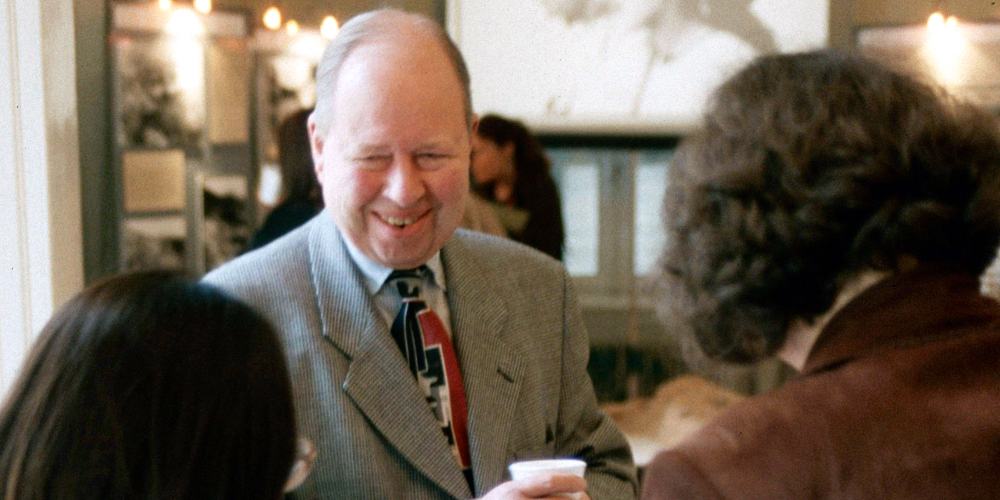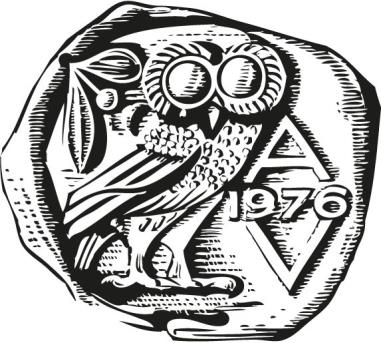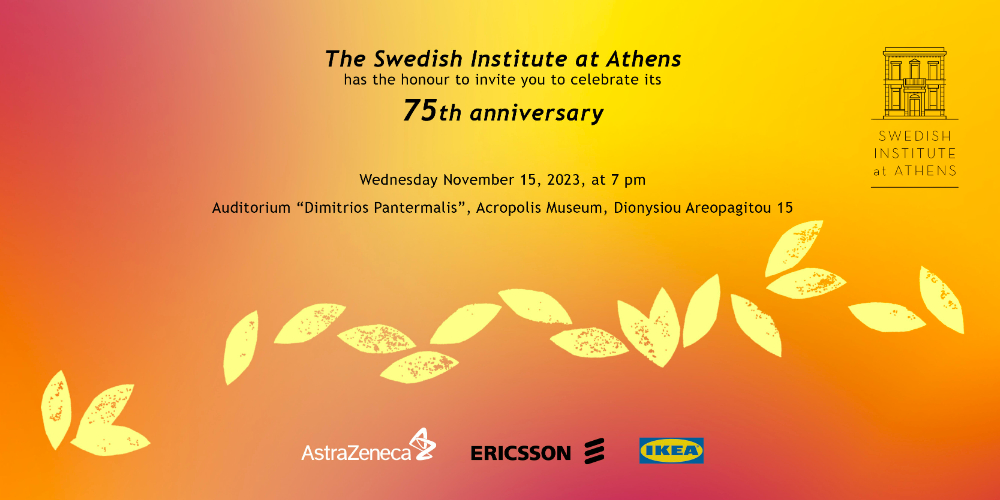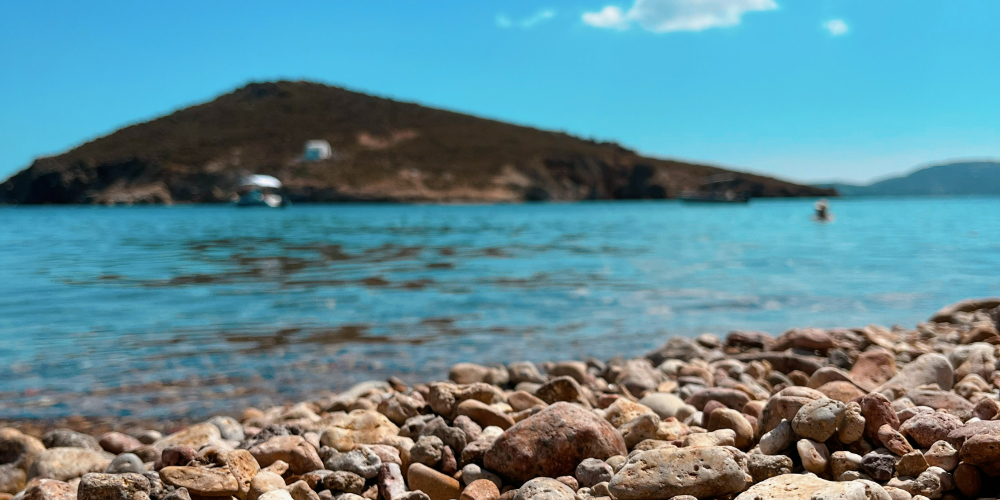Carl-Gustaf Styrenius (1929-2023)
Publicerad: 2023-01-30

Carl-Gustaf Styrenius, former director of the Swedish Institute at Athens, has passed away at an age of 93 years. Born 1929 in Helsingborg, Sweden, he studied at Lund University, where he received a PhD in 1967 on a thesis called Submycenaean Studies. He was the director of the institute from 1963 to 1970. From 1971 to 1989 he was the director of the Medelhavsmuseet in Stockholm. From 1986 to 2005 he was the secretary of the board of the institute. He was honoured by the Swedish Government with the title of professor in 1994.
When Carl-Gustaf Styrenius became director, the premises of the institute consisted of only a single six-room flat in an apartment house at Voukourestiou 29 on the slope of Lykabettos. This was not only the residence of the new director, his wife Barbro and their two small children. It also included the library of the institute, which during the past years had grown considerably. There were no rooms for the students of the annual archaeological spring course. The institute was no doubt in need of more space. When the new treasurer of the board visited Athens in 1965, he found a possibility to acquire (by a donation from himself) a second flat located immediately below the previous one. This meant that the new director and his family could move to a flat of their own. Students and visiting scholars could reside in the old institute flat, where there were also the office of the director and spacious rooms for the library.
In 1970 Carl-Gustaf Styrenius re-opened the Swedish excavations at Asine in the Argolid. Here the hitherto largest Swedish archaeological project in Greece had taken place in 1922-1926. Due to an application for a building permit the Greek Directorate-General of Antiquities, headed by prof. Marinatos now invited the Swedish Institute to investigate the area east of the Asine Akropolis. Four campaigns, 1970, 1971, 1972 and 1974, the later ones under the direction of Dr Søren Dietz, Copenhagen, were most rewarding and gave rich stratified finds from Middle Helladic to Hellenistic. Under a level with early Hellenistic sherds followed layers from the Geometric period with traces of houses and large quantities of pottery. Under the Geometric layers Protogeometric house walls appeared. The Protogeometric layers yielded a considerable sherd material and a couple of nearly complete vases. Hellenistic tile graves and Archaic cist tombs were also discovered in the Geometric and Protogeometric layers. Below followed Submycenaean and Mycenaean layers, into which Protogeometric child burials had also been dug down. The Mycenaean layers dated primarily to Late Helladic I-II and Late Helladic IIIC. Below, in the lowest level ten Middle Helladic cist tombs (1900-1550 BC) were found, partly surrounding and partly under a tumulus covered with stones. Parts of these tombs had to be excavated below the present subsoil-water level. It was, however, possible to conclude that there were no older remains than the Middle Helladic period further down.
In 1970 Styrenius also started excavations to the northwest of the Asine Akropolis, on the lower slope of the Barbouna Hill. Here there were not only Early, Middle and Late Helladic finds, but also Protogeometric, Geometric, Hellenistic and Roman. A Late Geometric, ceremonial terrace with three paved, circular platforms, surrounded by Argive Geometric pottery was discovered here. In 1973 the excavations on the Barbouna Hill were taken over by Dr Robin Hägg.
Generally, the new excavations at Asine are important in several respects. They have contributed to a much more detailed and diversified understanding of the history of Asine outside the Akropolis and the Lower City. From the stratigraphic point of view, the sequence of layers at the transition from the Bronze Age to the Iron Age are of the greatest interest. The rich occurrence of Submycenaean sherds is absent on other sites, although Submycenaean layers have been found also at Mycenae and Tiryns.
In 1970 Greek-Swedish excavations at the Agia Aikaterini Square at Kastelli, Chania started. The initiator was Yannis Tzedakis, then in charge of the ephoreia of Western Crete. Since 1964 he had been excavating every year in the Kastelli area, making finds from nearly all the cultural phases from Late Neolithic to Submycenaean. The theory of the absence of the Minoan civilization in Western Crete before Late Minoan I could therefore no longer be maintained. It was evident that this was a very important Minoan settlement. Tzedakis wanted to share the responsibility for this unique site with one of the foreign archaeological schools in Athens. With this intention he approached the Swedish Institute and Carl-Gustaf Styrenius in 1967, suggesting joint work at the site. This was not by mere chance; the Swedish policy towards the junta was well known and widely appreciated by Greek archaeologists. Already the same year the collaboration with the Swedish Institute started in minor scale, and in 1969 Tzedakis and Styrenius carried out a joint trial excavation in the Agia Aikaterini Square. Formal Greek-Swedish excavations under the joint direction of Tzedakis and Styrenius, started in 1970 and continued until 1987. In 1989 and 1990 the team also undertook large scale rescue excavations in the modern streets when the old drainage system had to be renewed. Since 1973 Erik Hallager, Aarhus, has been the field director of the Swedish part of the excavations.
The very rich finds from the excavations show that the site was inhabited from Neolithic times down to the Geometric period with a chronological gap of some 400 years between the Late Minoan period (1150 BC) and the Late Geometric period (750 BC). They indicate that Chania was once an important Minoan town. It was perhaps even the administrative centre of the western part of the island. This town probably corresponds to ancient Kydonia, which is mentioned on Linear B clay tablets from Knossos. The most important remains date from the Late Minoan period (1550-1150 BC). No other site in Crete has complete documentation of the last 400 years of the Bronze Age.
What has been found is a Minoan, probably palatial, centre in the Neo-palatial period, its destruction and subsequent rehabitation. In the excavation extensive remains of four houses, dated to the 16th century BC, were uncovered. They were probably part of a town with blocks of houses separated by streets and squares. The most exciting finds were two clay tablets with Linear A signs. They probably belonged to an archive, which indicates a palatial administration and settlement in the vicinity. The four houses were destroyed in a great conflagration around 1450 BC (Late Minoan IB).
At least five successive layers overlay this destruction level. This is one of the few sites in Crete to provide evidence of continued habitation in the Late Minoan II period. Shortly after 1375 BC a profoundly changed settlement emerged, but it was still one of the most important centres of the island, which the discovery of Linear B tablets has proved. This settlement was destroyed by fire and rebuilt several times before it was finally given up by the inhabitants, probably by the middle of the 12th century BC.
Text by Pontus Hellström





